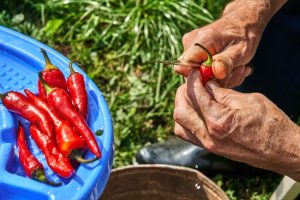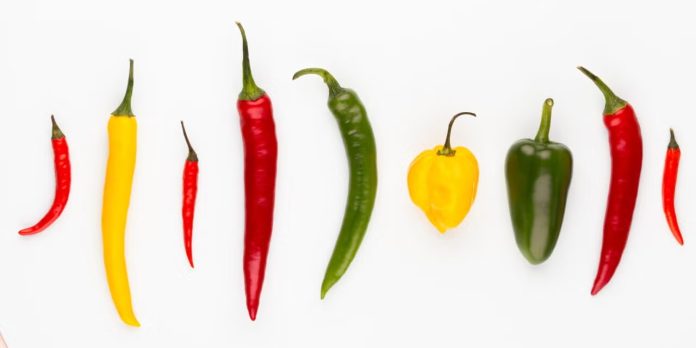TUSCALOOSA — The history of the chili pepper is in some ways the history of humanity in the Americas, says Dr. Katherine Chiou, an assistant professor in the Department of Anthropology at the University of Alabama.
As a paleoethnobotanist, Chiou studies the long-term relationship between people and plants through archeological remains. In a paper published this week, Chiou outlines evidence that the domestication of Capsicum annum var. annum, the species responsible for most commercially available chilies, occurred in a different region of Mexico than has been previously believed.
Unearthing Evidence
“Typically, what has been preserved in Mexico are extraordinary circumstances like cave sites, for example, that are high and dry with conditions that allow for extraordinary preservation,” Chiou said.

In the realm of domestication research, the assumption has been that the origin of a species’ domestication is the area of greatest diversity.
Preserved cave sites and the diversity of chili pepper varieties in the Tamaulipas region of Mexico have led to the assumption that it was the origin of Capsicum annum, the species that gives us the jalapeno, poblano, bell pepper, Thai chilies and other commercially grown chili pepper varieties.
Using a multidisciplinary approach, Chiou and collaborators in Mexico have developed a new understanding of the likely birthplace of cultivated chili peppers. One of the primary data sets is an extensive collection of seeds from modern chili pepper species and cultivars alongside detailed descriptions of their environment and growing requirements.
This modern cultural and botanical information was layered with electron microscope imaging of archeological seeds, ecological models stretching back 20,000 years and, courtesy of the government of Mexico, information from all registered archeological sites in the country. With multiple lines of evidence, the researchers teased out a different story of the origins of a chili pepper that is now cultivated and eaten all over the world.
Challenging the Chili Pepper Narrative
Two things emerged. First that Tamaulipas, the region assumed to be the origin of this Capsicum species, did not have conditions that would support wild chili pepper growth in the Holocene era, the time when domestication appears to have begun. The data indicate that the lowland area near the Yucatán Peninsula and southern coastal Guerrero is a more likely candidate for first encounters between wild Capsicum and early humans.

Second, and potentially more interesting, is that chili pepper domestication is not a firmly drawn boundary. “We think domestication was around 10,000 years ago or earlier,” said Chiou. “But through Postclassic Maya times, which is relatively late in the culture history of the region, we see this continuum between wild and domestic.”
Usually, domesticated plants are kept mostly separate from their wild progenitors, but chilies appear to have continually been interbred with wild varieties until quite recently. Some wild varieties are still consumed today, like the chiltepin in the southwestern U.S., and many more varieties are curated by native peoples in Mexico. It’s a messy story, but that may not be a bad thing.
“What we are saying is that we need to engage with that ambiguity,” Chiou said. “Ambiguity is actually telling us something.”
A Hot Take on Agriculture
The modern domesticated chili pepper is adaptable and plastic, able to take root in many climates and be bred into many shapes, colors and flavors. Chiou teaches in her archaeology of food class that food carries a history, that every meal is a microcosm of human experience.
In the context of today, part of the story is that we are losing agrobiodiversity at an alarming rate. Monoculture and a preference for commercial varieties for economic reasons create vulnerability in our food supplies, especially in times of climate variability.
“Farmers used to keep seeds on the side,” Chiou said. Not just with chilies, but with other domesticated plants, farmers once kept their own banks of seed varieties. One cultivar might be more drought tolerant, for example, and the farmers would have some ability to adapt to conditions.
Maintaining varieties ensures you have a backup plan. Commercial agriculture may soon have to re-learn some of the lessons farmers once knew. “As I teach about the archeology of food, I’m continually tying what we see today with what happened in the past,” Chiou said.
Why We Love the Heat
Chilies are different from other foods that researchers use to learn more about ancient humans, Chiou said. For one, they have almost no nutritional value. People don’t eat chilies for calories or to stave off vitamin deficiencies.
We eat chilies for the experience.
“You’re sweating, and your senses are under attack,” Chiou said. “And as a result, your body dumps endorphins and you get almost a sense of euphoria.” As a child, she watched an aunt eat spicy food, crying and laughing at the same time. “Chilies inspire this love and fascination. It’s just one of those plants that gets under people’s skin.”
Don’t miss out! Subscribe to our email newsletter to have all our smart stories delivered to your inbox.



